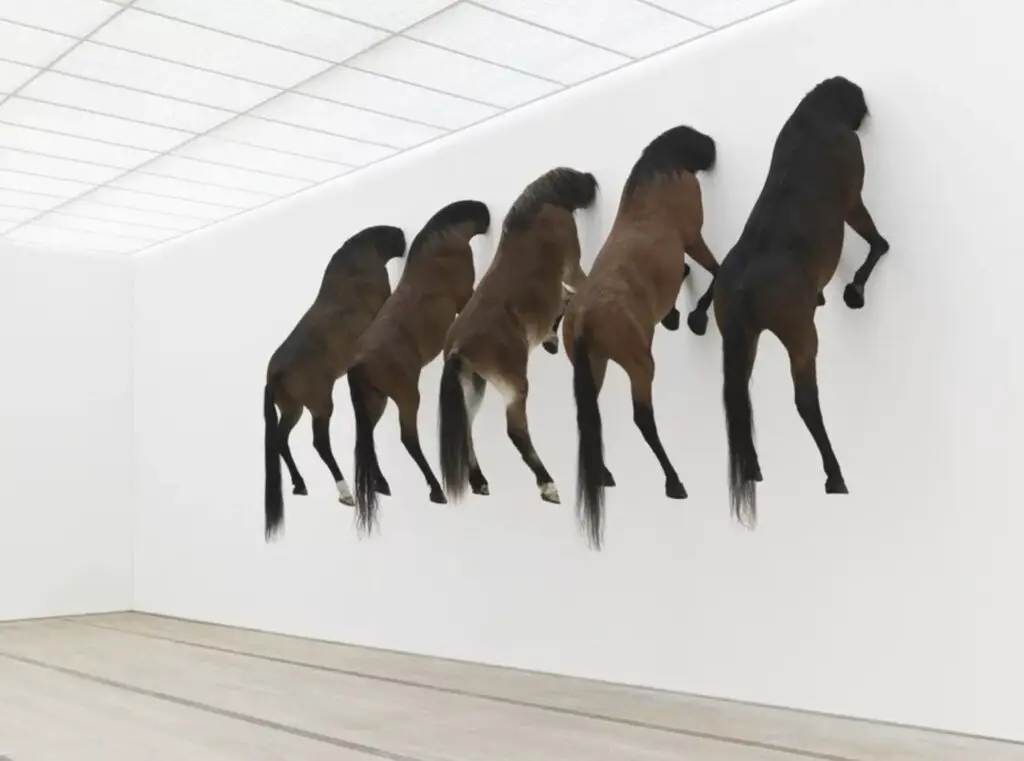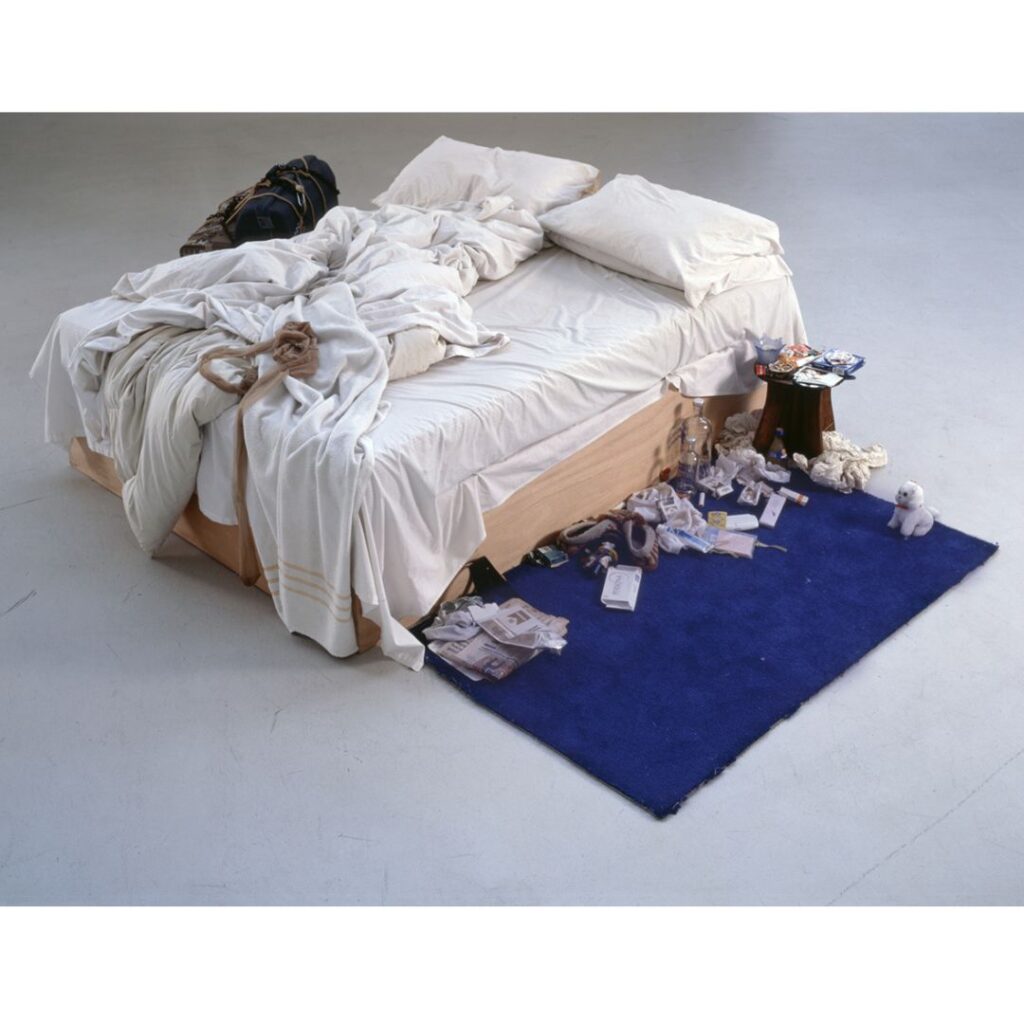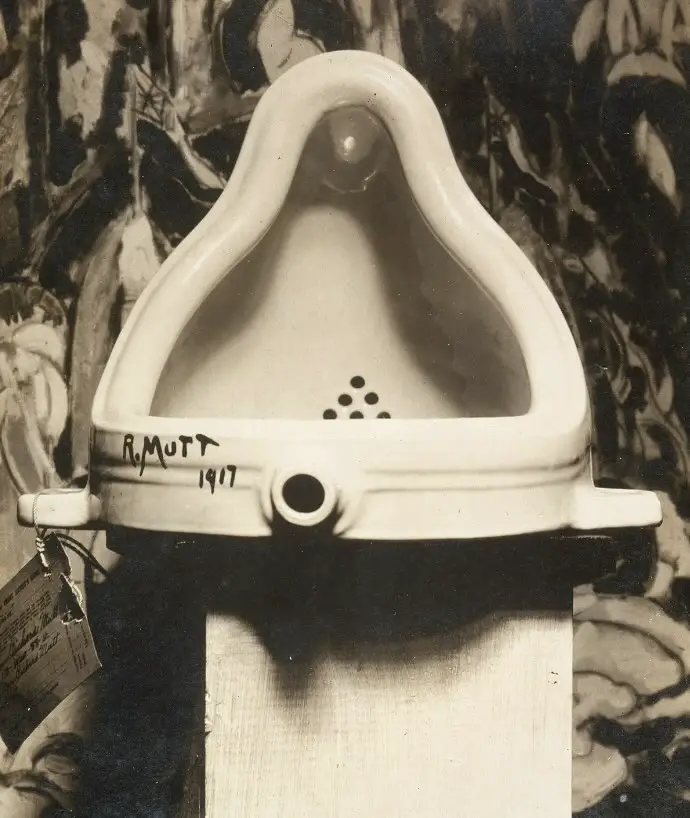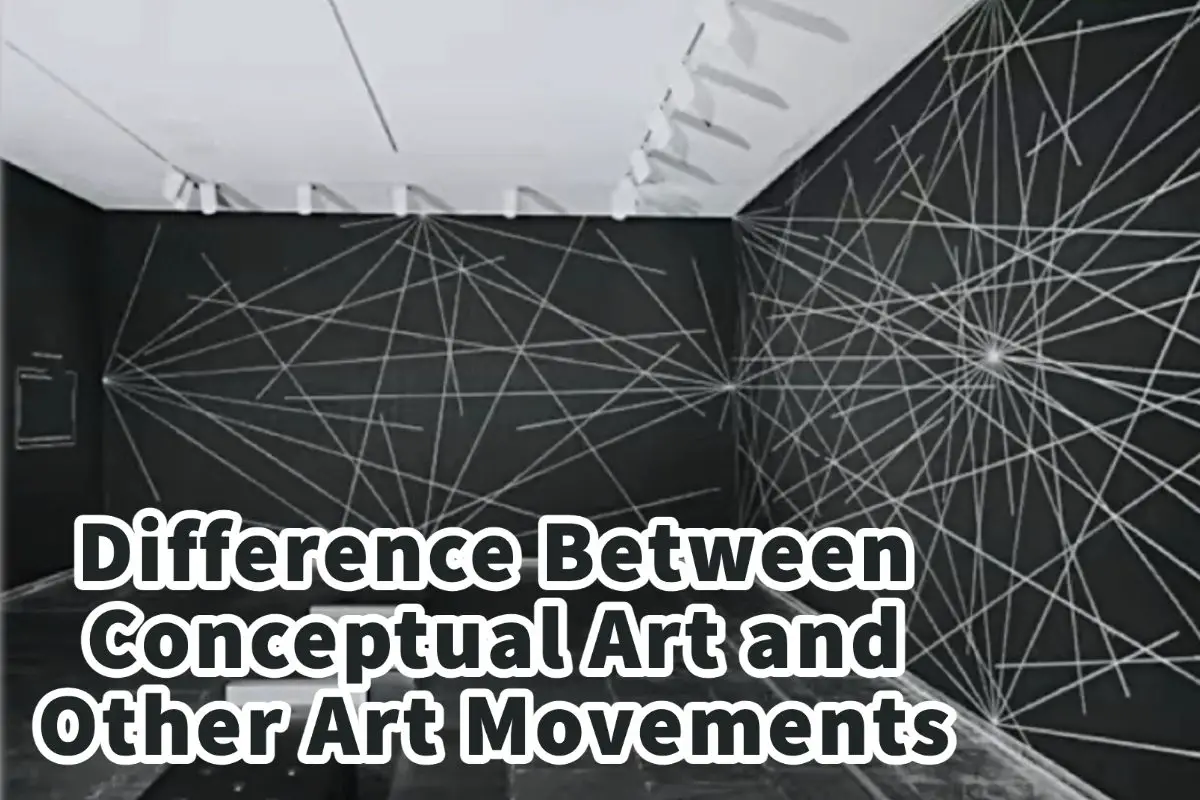When people look at conceptual art, they can tell this art movement is different from many other art movements. Conceptual art marks a change in art movements.
Conceptual art is different from other art movements because Conceptual art is about the idea or process and not the finished art piece itself. This is what makes conceptual art a unique art movement in the 1960s and 70s.
Table of Contents
- Conceptual Art Defined
- Conceptual Art – Idea More Important Than The Art
- Artists Continue To Produce Conceptual Art
- Frequently Asked Questions
- Related Questions
Conceptual Art Defined
The Conceptual artist is sometimes referred to as conceptualism. The American Artist Sol LeWitt defined Conceptual Art best when he wrote:
“In conceptual art the idea or concept is the most important aspect of the work. When an artist uses a conceptual form of art, it means that all of the planning and decisions are made beforehand and the execution is a perfunctory affair. The idea becomes a machine that makes the art.”
Sol LeWitt
As the name implies, in conceptual art, the most important thing about the art itself is the concept and not the finished product of the art; this is what makes conceptual art very different from other art movements.
Conceptual art was a break in art as we knew it; Conceptual art was a unique art movement. It was not just about the finished product of the art or sculpture, but it was about the idea and the artistic process.

Conceptual Art – Idea More Important Than The Art
In Conceptual art, the idea of the art is more important than what you create. In other words, the object of the art is secondary; it can exist, but it’s not as important as the idea that the artist is trying to get across or the process the artist used to create the art.
Conceptual art was a break in art as we knew it in that the artists would often purposely not have a finished work of art as a painting or sculpture. The conceptual artist was about the idea more than the end product or the art itself. Read on as we discover more.

Conceptual Artist Uses Anything To Get Ideas Across
Conceptual artists would use any materials they can access or the materials they feel would best help convert the message they are trying to convey.
For Conceptual art, you may see anything from a performance to a written description. The artist will use the art form they feel best conveys their message.
Conceptual Art – Process Of The Art Is Important
The process that the artist used for the Conceptual art was essential. The artist often painstakingly writes down the entire process or how they create the art. This is why the process and the idea are essential for the artist. Without the process and vision, they feel there would be no art.

Conceptual Art – Has Not One Style
What can make Conceptual art confusing for many is that Conceptual art has no single style or form. The artist could use whatever style, form, or object they decided was best for their art.
By the late 1960s, some conceptual art trends started to emerge among some artists.
Conceptual Art Happened All Over the World
Conceptual art happened simultaneously across Europe, North America, and South America from the mid-60s to the mid-70s. Conceptual art is a movement that is not just associated with one place but is a worldwide movement taking place all at once.
Conceptual Art Was Not In Galleries
Many conceptual artists’ art forms did not produce a finished object like a sculpture or painting. Conceptual art is a form of art that many galleries could not buy or sell the artwork.
It also meant that the artists associated with conceptual art often attempted to bypass the commercial art world by stressing the production process and methods and not the art itself.
Many Conceptual Artistis Had Strong Socio-Political Dimension
The 1960s and 70s were a great time of change worldwide, especially in the United States and Europe. In particular, many things were happening in the United States as the Vietnam War and the Civil Rights Movement.
People began to question morals, and women no longer wanted just to get married and have children; they wanted freedom and education. The hippie culture emerged throughout the United States and other parts of the world.
At this time, many artists were also questioning their own lives, particularly the social-political dimension of their lives. The conceptual art they created reflected a dissatisfaction with society and government policies.

Artists Continue To Produce Conceptual Art
Even though conceptual art was associated with the 1960s, many artists continue to make conceptual art in the 21st century. Some examples of artists who continue to make conceptual art today are Martin Creed and Simon Starling.
To understand the Conceptual art movement, you need to dig deeper into the idea or the process and what the artist conveys. In some ways, it is a more complex type of movement than the other movements, as it requires you to be more active and figure out what the art is trying to convey.
Conceptual art is an inspiring art movement; it helps me understand and look deeper into the meaning of art. Anita Louise Art is dedicated to art education, great artists worldwide, and inspiring others to find and create their art. We look at all kinds of art that are made to uplift and inspire. #ArtToMakeYouSmile! #ArtToMakeYouHappy!
Anita Louise Art is dedicated to art education, great artists, and inspiring others to find and create their art. We love art that uplifts and inspires. #ArtToMakeYouSmile! #ArtToMakeYouHappy!
If you want to see any of my art, you can find out more by clicking here. If you are interested in what inspires me and my paintings, you can discover more by clicking here.
We have a free newsletter and would love you to be part of our community; you can subscribe to the newsletter by clicking here. If you have any questions, I would be happy to talk to you anytime. You can reach me, Anita, by clicking here.
Subscribe to our Anita Louise Art YouTube Channel with great videos and information by clicking here.
Join us for our podcast “5 Minutes With Art.”Spend 5 minutes a week with us to discover and learn about great art and artists. You can find out more about our podcast by clicking here.
Frequently Asked Questions
What is Conceptual Art, and how does it differ from traditional art movements?
Conceptual Art focuses on the idea or concept behind the artwork rather than the final product. Unlike traditional movements, the emphasis is on the intellectual and theoretical aspects.
How does Conceptual Art differ from Abstract Expressionism?
While Abstract Expressionism is known for spontaneous and emotional brushstrokes, Conceptual Art dismisses the importance of the physical creation, concentrating solely on the concept or idea.
In what ways does Conceptual Art contrast with Minimalism?
Minimalism aims to reduce art to its essential elements, often through simplicity and repetition. Conceptual Art, on the other hand, prioritizes the idea over the visual aesthetics, allowing for a broader range of forms and mediums.
How does Conceptual Art challenge traditional notions of art creation compared to Renaissance art?
Renaissance art celebrated technical skill and realistic representation, whereas Conceptual Art challenges these traditions by prioritizing the concept, sometimes without a tangible visual component.
Is Conceptual Art similar to Surrealism in any way?
Conceptual Art and Surrealism differ significantly; while Surrealism explores the subconscious and dreams through visual elements, Conceptual Art is more concerned with abstract ideas, often devoid of traditional artistic elements.
How does Conceptual Art differ from Pop Art?
Pop Art often incorporates popular culture imagery, while Conceptual Art disregards conventional aesthetics. Conceptual Art places more emphasis on the idea’s intellectual depth rather than the visual appeal.
What sets Conceptual Art apart from Performance Art?
While both involve non-traditional mediums, Performance Art focuses on live actions and experiences, whereas Conceptual Art revolves around the underlying concept, which may or may not involve a performance element.
How does Conceptual Art challenge the conventions of traditional sculpture compared to Classical Sculpture?
Classical Sculpture emphasizes physical form and beauty, whereas Conceptual Art may not produce tangible sculptures. The concept is the primary focus, and the form can vary or even be absent altogether.
How does Conceptual Art differ from Cubism in terms of representation?
Cubism distorts visual reality through fragmented and geometric forms, challenging traditional perspectives. In contrast, Conceptual Art challenges the very notion of visual representation, often focusing on abstract or non-visual ideas.
How does Conceptual Art differ from Land Art or Environmental Art?
While Land Art incorporates natural landscapes into the artwork, and Environmental Art engages with environmental issues, Conceptual Art is not limited by specific materials or locations. It centers around abstract ideas that may or may not involve physical components.
Related Questions
What Does Conceptual Art Mean? The Conceptual Art Movement
Conceptual art uses the materials, techniques, or form the artist feels most appropriate to get their artistic ideas across. Conceptual art can be almost anything from a display of objects to photographs to a performance. Almost anything goes with the Conceptual Art Movement.
By clicking here, you can learn more by reading What Does Conceptual Art Mean? The Conceptual Art Movement
Why Are Art Movements Important?
Understanding art movements are not just crucial for the artist but also for anyone interested in art. We can learn many things from the art movements that will help us understand history, art techniques, art themes, and how art is created. To truly understand art, we need to understand art movements.
You can discover more by reading Why Are Art Movements Important? by clicking here.


